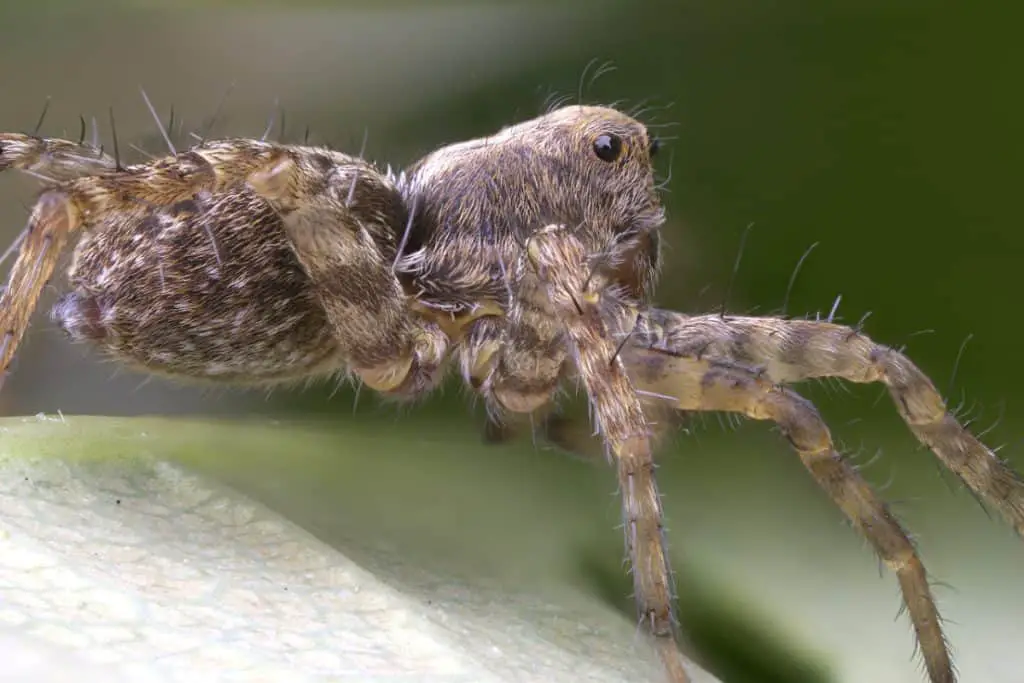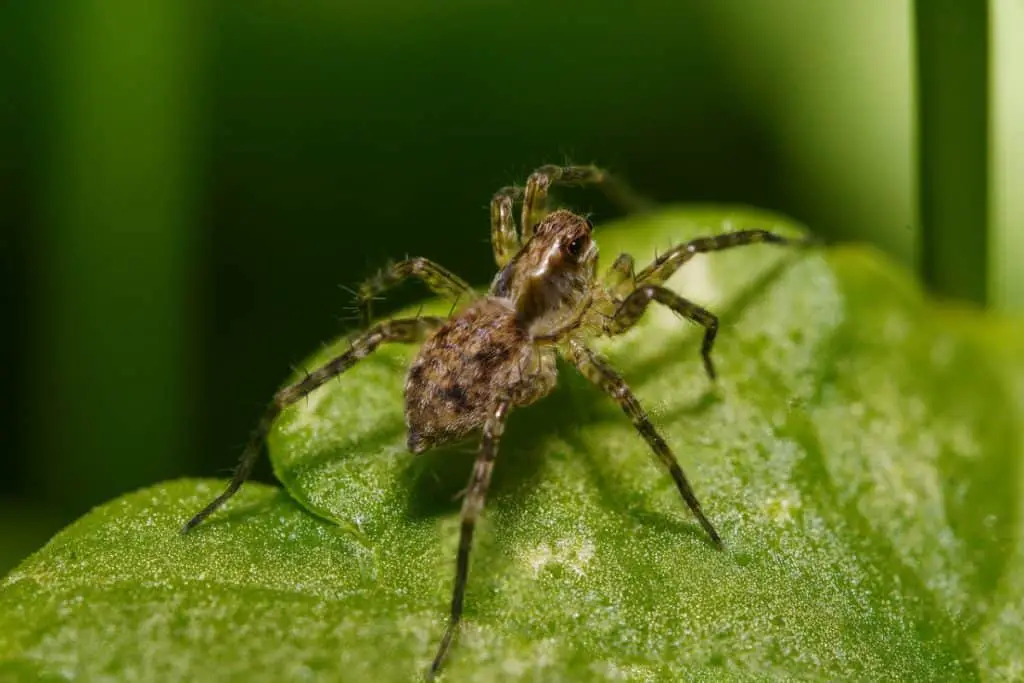Wolf spiders are active hunters, preying on insects and sucking their juices for food. However, they also fall victim to small spider hunting wasps.
Wolf spiders are members of the family Lycosidae, and there are about 2,300 species worldwide. They attack their prey by using their strength and speed to surprise their prey. However, they are also susceptible to attack by spider-hunting wasps of the Pompilidae family.
Some insects, and other arthropods, are fierce predators who hunt down creatures smaller or weaker than themselves for food. This is not always a one-way system, however. Some of these hunters are themselves attacked by equally ferocious predators.
The lives of wolf spiders and spider-hunting wasps (pompilids) cross this way. The spiders prey on small insects such as flies and are preyed on by the wasps.
If you want to know more about wolf spiders and their predators, please read on.

Surprise Attack
Wolf spiders catch prey not with a web like our familiar garden spiders but by using their speed, strength, and surprise of their attack. They will chase down chosen victims in much the same way as a wolf, hence their name.
Wolf spiders belong to two families, the Lycosidae and the Pisauridae, and there are about 2,300 species worldwide. Most of these are a drab brown or grey and can be distinguished from other spiders by the pattern of their eight eyes.
The eyes are arranged in three rows, with four eyes in the front row and two in each of the other rows. Most wolf spiders are 5-10mm (1/2in) long, although the largest wolf spider, the female Carolina wolf spider can reach up to 35mm long.
Wolf spiders are ground hunters and frequent woodland, meadows, heathland, and marshland. Some are associated with specialized habitats, such as the swamp spider, Dolomedes fimbriatus, or any of the Trochosa species which like heathland and live under stones or heather, coming out to search for prey after dark.
The keen sight of the wolf spider enables it to spot moving prey from a distance of a meter (3ft) or more. It lurks in the undergrowth, then rushes out to chase and overpower the victim with a bite from its fangs. Some species, such as the pale-bodied, dark-ringed Arctosa perita, dig a burrow in the ground to hide and pounce on victims as they pass by.
Do you know why we need spiders? Find out in this article I wrote
Breeding
Courtship among wolf spiders is carried out by means of visual signals. A mating male stands before a female and waves his long palps as if sending a message by semaphore. Some species wave the front legs, while others vibrate the whole body.
The female faces the signaling male and repeats his movements to indicate that she is ready to mate. At the end of the display, the male climbs on top of the female and injects into the genital opening of the female the sperm that he has previously transferred to a special organ at the tip of each palp.
The female spider lays her eggs on a silk mat and wraps them in more silk to make a round cocoon. A lycosid female attaches the cocoon to the tip of her abdomen while members of the pisaurid family carry them, held up by her fangs and supported by strands of silk beneath her body.
In contrast, a female pisaurid detaches her cocoon before the spiderlings emerge and spins a sheet of silk over it. The young spiders remain in this nursery tent, with their mother on guard, until they are able to fend for themselves.
Young lycosid spiderlings travel on their mother’s back until they are old enough to fend for themselves They descend by scrambling down their mother’s legs, then run up tall grasses or other foliage. At the top, each youngster rises into the air, attached to a long strand of silk, and is carried along in the wind.
This is called ballooning and helps the young spiders to disperse, and they may be carried only a few meters, or several miles. Once they land, they start their own life of hunting.
Would you like to know the difference between spider webs? Find out here

What Hunts Wolf Spiders?
Wolf spiders are hunted by female solitary wasps known as spider hunters. To attack and overcome a wolf spider is difficult. Still, these tiny wasps, such as the red-and-black-banded Anoplius fuscus and the grey Pompilius plumbeus are able to sting the spiders and paralyse them with their venom.
The thin-waisted wasps can curve their abdomen around the spiders and sting them on the more vulnerable underparts. The female pompilid catches spiders during the summer to feed her future young.
After mating, the female wasp searches among the undergrowth for a spider. Her excitable behavior, as she rushes about with wings quivering, makes her very easy to find.
Once caught, the spider is quickly immobilized. Because of the color, scent, and lunging, the darting behavior of the attacking wasp, the wolf spider makes little or no attempt to fight back.
The wasp carefully hides its paralyzed prey, sometimes in a shallow grave, while she digs a nesting burrow in the soil with her legs and jaws. Her long legs are equipped with bristles and spurs, which help in raking the earth.
When the burrow is complete, it consists of a straight or curving shaft with a cell at the bottom where the wasp hauls the spider into it, dragging it backwards down the hole.
As the wasp hunts its prey first, then digs the nest, there is a period during which her prey is left unguarded. Many wasps return to the prey repeatedly while digging, but it may have been stolen by other hunting wasps.
Have you ever wondered how spiders attract a mate? Find out about courtship displays here
Paralyzed Prey
When the wolf spider is in position at the bottom of the burrow, the wasp lays a single egg on it, then seals up the opening of the nest with earth. When one nest is complete she repeats the whole procedure for the next egg, laying more than 10 a season.
The egg hatches in two to three weeks, and the larval wasp feeds on the spider, which, in many cases, is still living but in a state of helpless paralysis. Once consumed, the wasp larva develops into a pupa and overwinters in this form, emerging as an adult the following spring.
